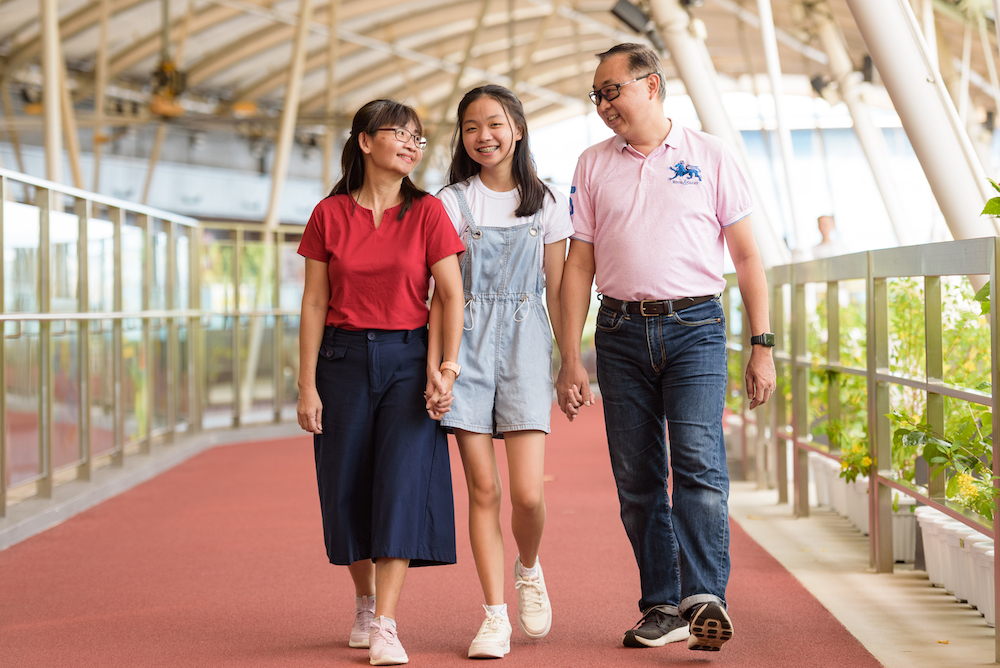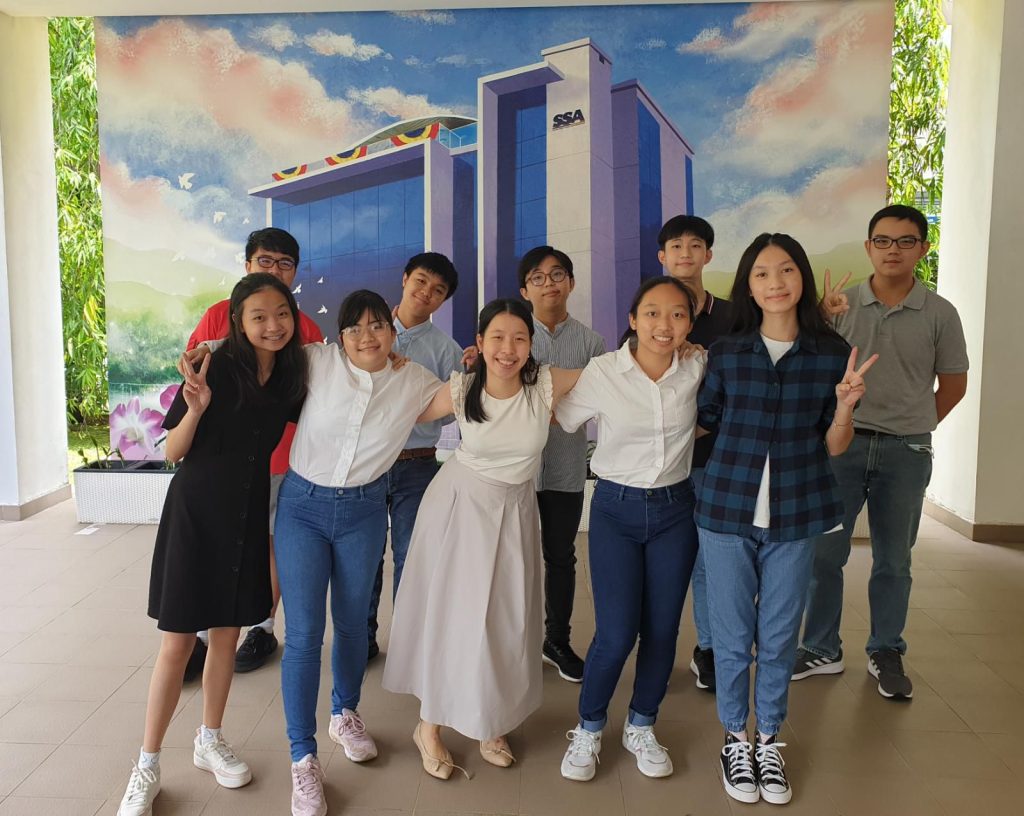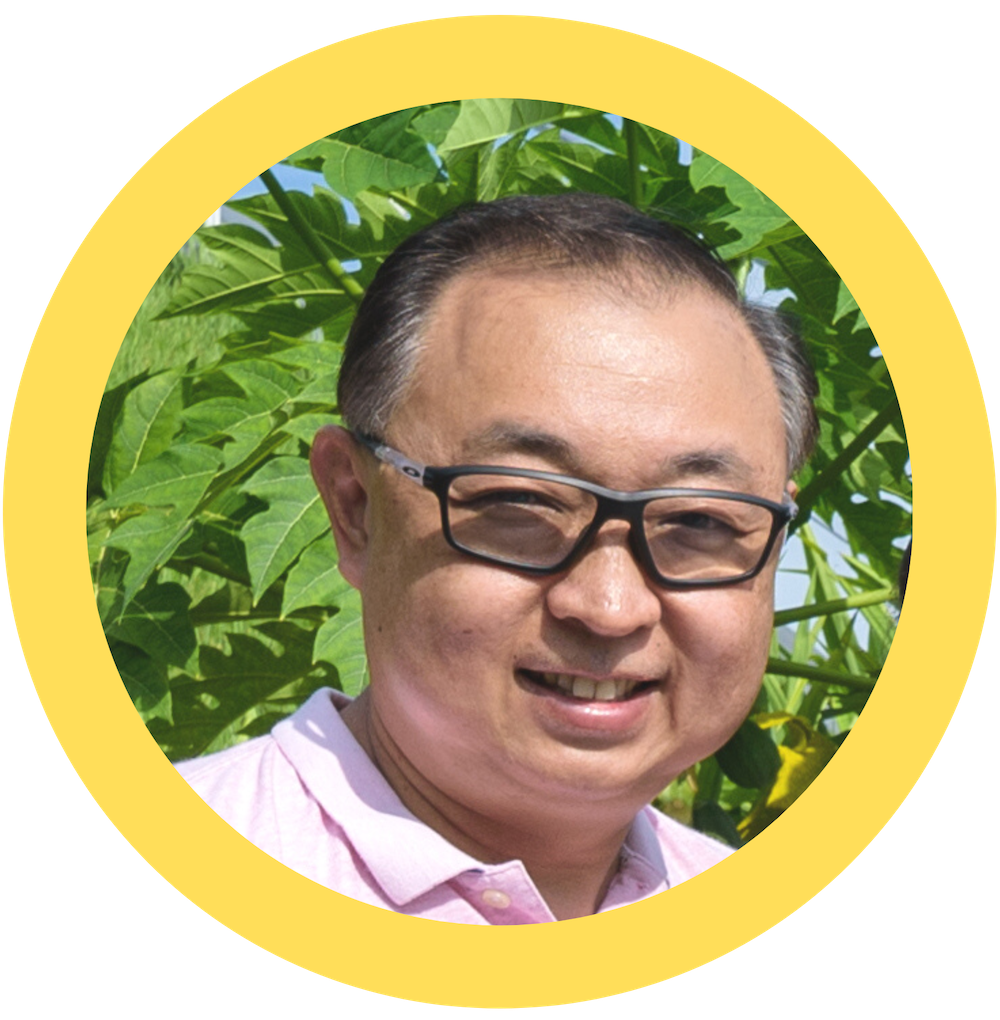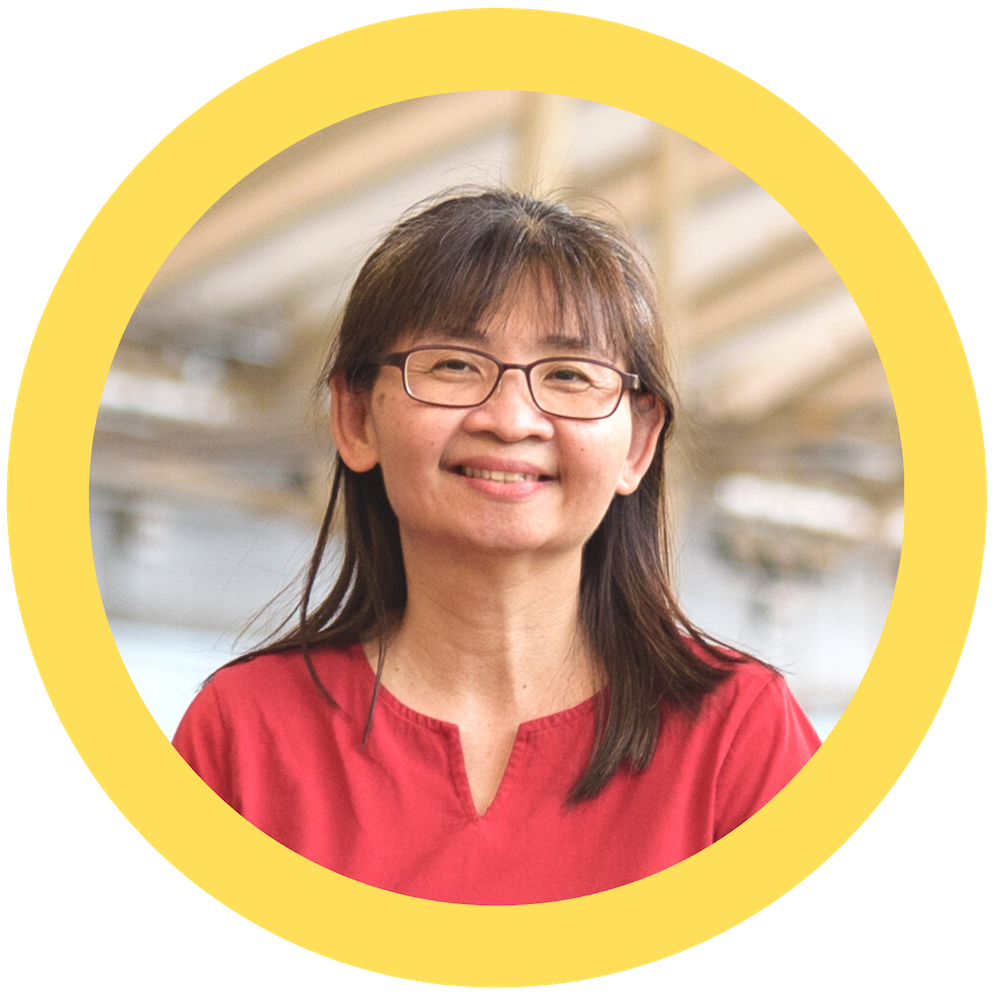
Chang Si En
Young Women Division
Since young I have been warmly nurtured in the garden of the Soka Gakkai. I vividly remember my parents lugging our keyboard to discussion meetings where I played Soka Gakkai songs for the cultural segment. I also took part in skits, shared experiences, and helped to copy Gosho passages on big pieces of paper. My parents explained that my contributions, no matter how big or small, made the meetings an even better experience for the attendees. My mother also told me that even if there is just a single person attending the discussion meeting, and is encouraged by the meeting, that meeting is a success.
Both my paternal and maternal families practise Nichiren Buddhism. I have observed how my grandparents, parents, uncles and aunties strove for kosen-rufu and supported each other’s struggles based on the daimoku of Nam-myoho-renge-kyo.
My parents always encouraged me to join them in performing the morning and evening gongyo and daimoku. When I became lazy they motivated me with encouragement and practised alongside me. Although I always found our Creative Life and Soka Times on the table or sofa at home, I did not take the initiative to read them or any other Ikeda Sensei’s writings. Nevertheless, my parents never stopped encouraging me to read the publications, even if just a little at a time.
I was educated at Soka Kindergarten, the place where I grew more confident with frequent show and tell sessions, and where humanistic teachers and staff provided me with a conducive environment for learning. Primary and Future Division (FD) meetings also played a part in deepening my understanding of Buddhism. I always gained great takeaways from the meetings and made small breakthroughs through my participation in them. For example, during our FD Year End Programme, we were encouraged to study the “Westward Transmission” chapter of The New Human Revolution, a novel by Ikeda Sensei. That was the first time I really studied Sensei’s writings and it was eye-opening.

Division as they mutually encourage and inspire each other. (June 2022, Soka Peace Centre)
Facing My Youthful Challenges
In school, I took Higher Chinese and sat for the Chinese Language O-level paper in 2021. After reviewing my choice of essay format with my mother, I was unconfident and thought I might not score the A1 needed to be eligible to take Higher Chinese the following year in Secondary 4.
It was also at that time that I went for my spine check-up and received the diagnosis that my scoliosis (the curvature of the spine) had worsened and might require treatment. I was terrified and felt extremely downcast.
However, my parents encouraged me to chant sincerely to the Gohonzon about the things that were bothering me. So, during the year end holidays, I chanted an hour daimoku every day with specific prayers for my studies and health.
Since it was the school holidays, I frequented my younger cousins’ home. I was especially touched and grateful to know that they, aged 11 and 5, had chanted for me, too. A regular at FD meetings, I was also deeply encouraged by one of the testimonies I heard at a meeting. The speaker was a graduate in a similar situation who felt that he had done badly for the national examinations. However, continuing to attend meetings and chant sincerely, he eventually attained very good results. This reinforced what people around me had been encouraging me that “Nothing is impossible with the strategy of the Lotus Sutra”.
I chanted earnestly for my prayers to be actualised. Thus, when I received my results in January 2022, I was overjoyed to have achieved my goal of getting an A1 grade. In June, I was greeted by the good news that even though my scoliosis had worsened, I need not undergo any treatment due to factors such as my growth rate and bone maturation. An immense sense of relief and gratitude overwhelmed me. More importantly, I was very thankful to be surrounded by so many people who deeply cared about me and chanted for me, including my dearest grandmother.
Sharing the Greatness of Nichiren Buddhism
Ikeda Sensei says,
“If you strive based on a powerful determination to help others, to support them and encourage them, you will naturally create an everlasting record of achievement.
“Even if you’re a poor speaker, you can still make all-out efforts for kosen- rufu; you can challenge yourself sincerely and earnestly wherever you are. That’s the spirit of genuine successors of the SGI, people who make invaluable contributions to kosen-rufu. ”
I hope to challenge myself to share this wonderful Buddhist practice with people around me and be a source of support for them, but I tend to hesitate.
I tried sharing Buddhism with a close friend and gave her the book An Introduction to Nichiren Daishonin’s Buddhism. To my pleasant surprise, she finished reading the entire book. Back in 2020, I had intended to invite her and another close friend to the World Youth General Meeting (WYGM) held online, but I procrastinated, struggling with my fear of rejection. Then, my phone crashed the night before the WYGM. I was devastated and sat in front of the Gohonzon, fervently chanting that I could at least retain my contacts. Fortunately, my father managed to get my phone turned on and I decided I should wait no more and sent the invites. Eventually, even though our final year examinations were just three days away, both my friends attended and were encouraged by the meeting. Through this experience, I realised that we would never know how our actions can touch the lives of others or how others would respond until we rouse the courage to take action.
I have been mustering the courage to share Ikeda Sensei’s guidance with my teachers and peers and will continue with my efforts. Towards 2030, my determination is to continue to contribute joyfully in my district, making it an oasis of hope, study The New Human Revolution so as to deepen my understanding of Nichiren Buddhism and my mentor Ikeda Sensei, and put Buddhism into practice by courageously sharing it with family and friends.
I have a dream. It is to become an educator so that I can inspire and nurture future generations in the same spirit as my seniors in faith and I will work hard towards it!

Father, Chang Cheng Liang
As the saying goes, “It takes a village to raise a child”, I believe the entire environment my daughter lives in will be the ecosystem for her growth. Hence, it is important for me to provide her with a nurturing environment and ensure that I am a good role model for her. I always engrave these words from Sensei in my heart: “It’s unreasonable to think that your children will understand and accept your faith just because they’re your children. Particularly since they are adults, they will naturally have their own beliefs and values, so you should strive to respect their views and the way they choose to live.
“If, based on such respect, you truly wish to bring them to your faith, the best way and only way is through your personal example. You must demonstrate just how wonderful this practice is through your life and character. In other words, you must be a father your children can respect and of whom they really can be proud.” (NHR Vol 6, “Long Journey” chapter)
I make an effort to have dialogues with her over meals or while we are watching television programmes. I am also mindful to let her grow freely in the garden of the Soka Gakkai by supporting and encouraging her to participate in any SGS activities. Sometimes, my wife and I would ask her to share what she has learnt from an SGS meeting she attended. In the process, we have meaningful exchanges, and are able to grow in faith together.

Mother, Susan Heng Mui Kee
Si En is the child we had prayed for to be able to groom and foster and advance on the path of kosen-rufu as a family. We have never for a moment forgotten this vow we had made from the start and it guides us in all our actions to nurture her as a person.
I would always guide Si En back to chant in front of the Gohonzon when she is troubled. When she gains a victory, I reflect the journey with her and help her see how our Buddhist practice has led her to win over her problems. Then, I would encourage her to share her testimony at the discussion meetings, hoping that in the process she would realise the greatness of Nichiren Buddhism and understand the purpose of practising faith. I also remind her that it is not just the benefits we receive from our Buddhist practice, but her journey of growth and an undefeated spirit that will move the hearts of others and encourage them.
I used to draft Si En’s testimony for her when she was younger. When she was in secondary two, I was deeply touched and impressed when she told me that she would like to write her own testimony so as to relate with the experience.
Together with Si En and my husband, I am determined to base our lives on faith and Ikeda Sensei’s guidance, as we walk on the shared journey of kosen-rufu, engraving this Sensei’s guidance in my heart, “The hopes and wishes a mother cherishes for her children always reach them. The prayers of a mother who dedicates herself to kosen-rufu never fail to resonate in her children’s lives.”
(Adapted from December 2022 issue of Creative Life)
